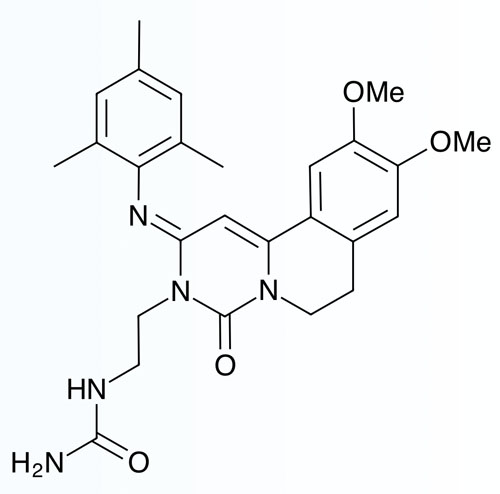An alternative therapy, developed by Nuance Pharma in partnership with Verona Pharma, is a novel small molecule drug that has both bronchodilatory and non-steroidal anti-inflammatory properties.

It also has potential in various other respiratory diseases, including, asthma, cystic fibrosis and bronchiectasis. A dual inhibitor of phosphodiesterases 3 and 4, it is delivered directly to the lungs via a standard jet nebuliser with no need for high flow rates or the co-ordination of breathing with dose administration.
After success in a panel of four proof-of-concept trials in healthy volunteers and patients with asthma and COPD, a randomised, placebo-controlled, double-blind crossover study was done with 29 patients with asthma.1,2
Subjects were given single nebulised doses of 0.4, 1.5, 6.0 or 24.0 mg of ensifentrine, 2.0, 5.0 or 7.5 mg of salbutamol or a placebo.
For both, the coprimary endpoints were peak and average FEV1 (forced expiratory volume in 1 second) during a period of 12 hours; ensifentrine gave a clear dose-response relationship and all active treatments were better than the placebo.
A further trial has been done to investigate its effects on lung function as an add-on to tiotropium.3 In all, 413 patients with COPD who had impaired lung function and symptoms despite tiotropium therapy were recruited and dosed; effects on lung function, symptoms and quality of life were all assessed for 4 weeks.
Subjects were randomised to receive open-label tiotropium once a day, along with blinded escalating doses of ensifentrine or a placebo twice a day. All doses of the drug gave a significant and dose-dependent increase in peak FEV1 from baseline to week 4 when added to tiotropium.
A significant increase in average FEV1 was also seen with the 3.0 mg dose after 4 weeks; improvements in the St George’s Respiratory Questionnaire for COPD were seen at week 4, particularly for the 1.5 and 3.0 mg doses.
The incidence of adverse events was similar in frequency across both arms. Two replicate double-blind, parallel-group placebo-controlled Phase III trials have been done.4
Patients with moderate to severe symptomatic COPD were randomised to receive the drug — either on its own or with a long-acting muscarinic antagonist in one trial (760 patients) and a long-acting beta-agonist in the other (789 patients).
Ensifentrine gave a significant improvement to the average FEV1 area under the curve at 0–12 hours compared with the placebo. It also reduced the rate of moderate or severe exacerbations compared with the placebo for 24 weeks.
There were significant improvements in symptoms and quality of life scores at week 24 in the trial including the antimuscarinic.
References
- L.G. Franciosi, et al., Lancet Respir. Med. 1, 714 (2013).
- L. Bjermer, et al., Pulm. Pharmacol. Ther. 58, 101814 (2019).
- G.T. Ferguson, et al., Int. J. Chron. Obstruct. Pulmon. Dis. 16, 1137 (2021).
- A. Anzueto, et al., Am. J. Respir. Crit. Care Med. 208, 406 (2023).
